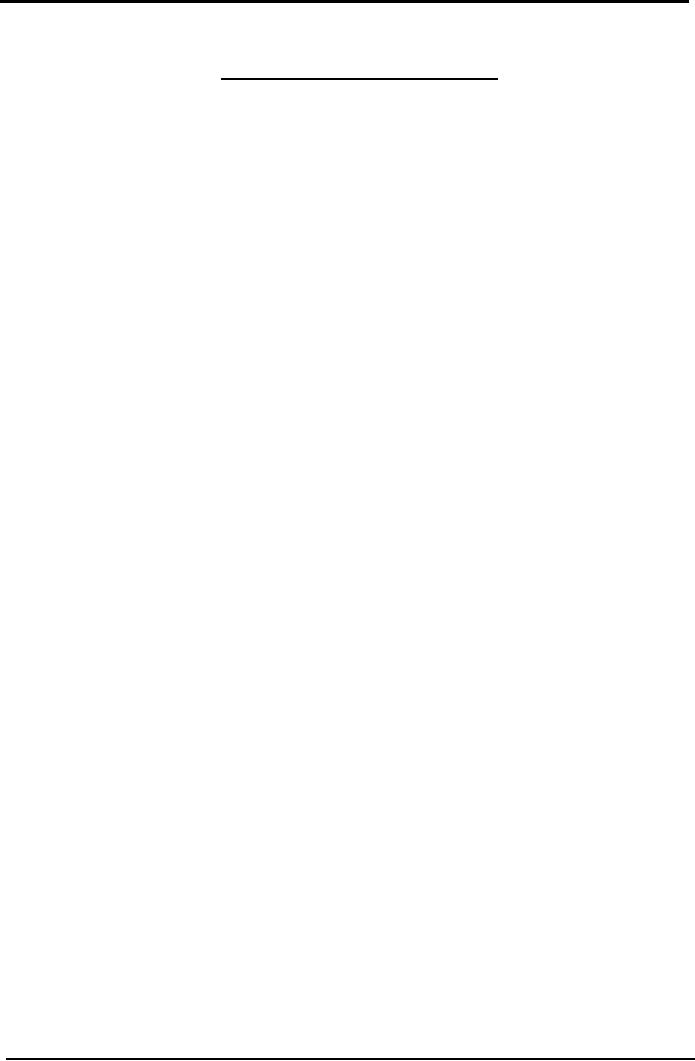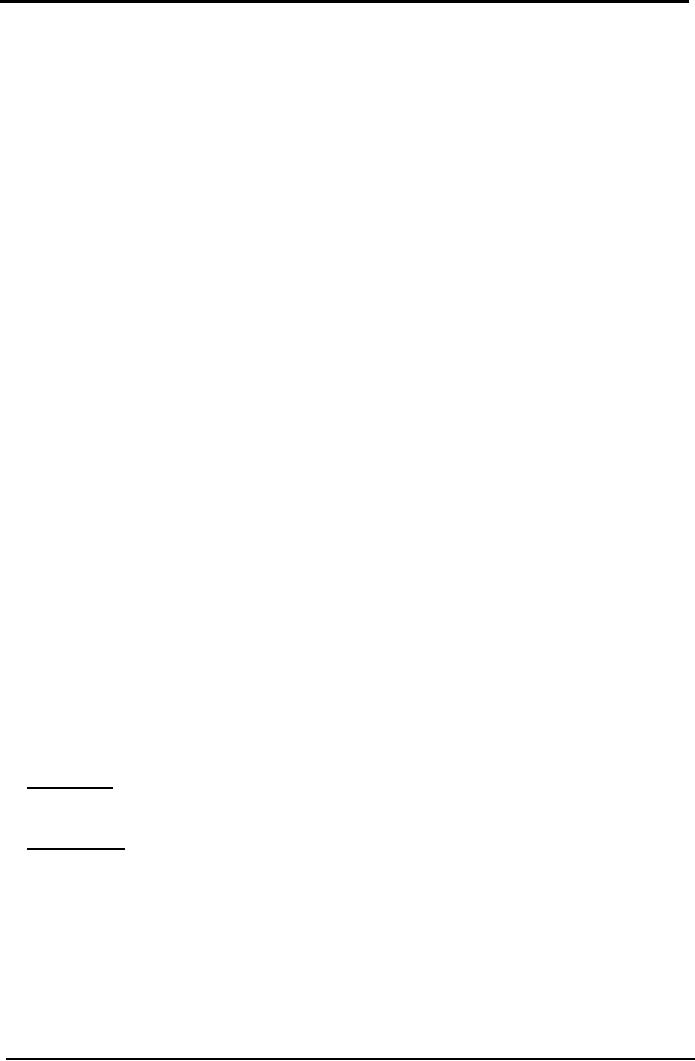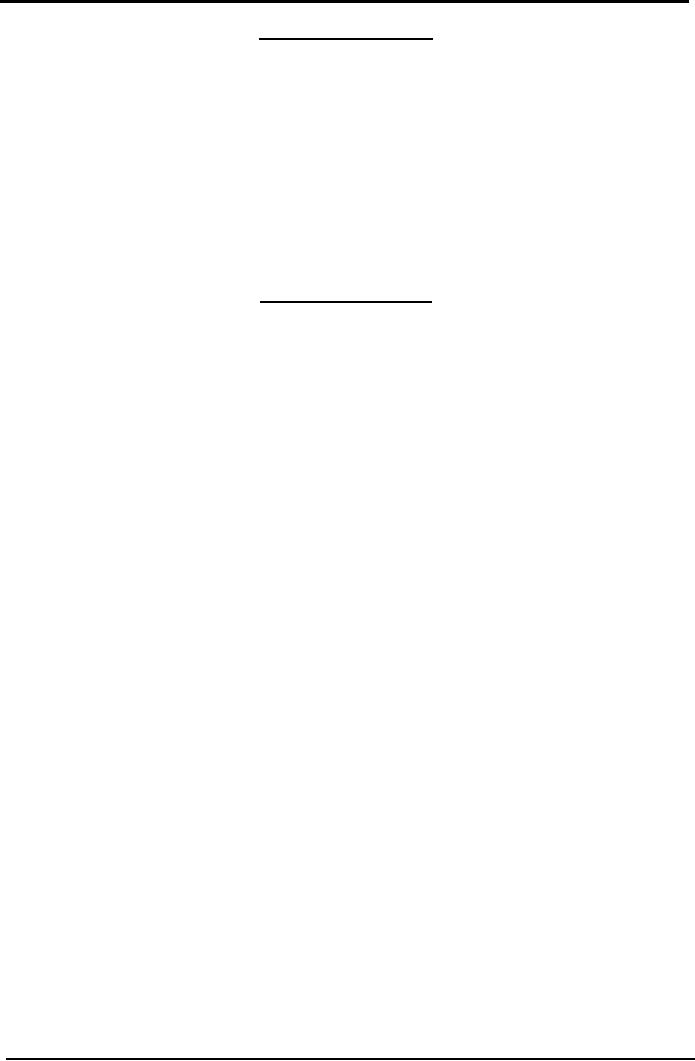 |

Cost
& Management Accounting
(MGT-402)
VU
LESSON#2
IMPORTANT
TERMINOLOGIES
Cost
Unit
It
is a unit of a product or service in
relation to which the cost
is ascertained, i.e. it is the
unit
of
the out put or product of
the business. In simple
words the unit for
which cost of
producing
the units is identified
/allocated.
Example
Ball
point for a Ball point
manufacturing entity
Bottle
for Beverage producing
entity
Fan
for a Fan manufacturing
entity
Cost
Center
Cost
centre is a location where costs are
incurred and may or may
not be attributed to
cost
units.
Examples
Workshop
in a manufacturing concern
Auto
service department
Electrical
service department
Packaging
department
Janitorial
service department
Revenue
Centre
It
is part of the entity that
earns sales revenue. Its
manager is responsible for
the revenue
earned
not for the cost of
operations.
Examples
Sales
department
Factory
outlet
Profit
Centre
Profit
centre is a section of an organization
that is responsible for
producing profit.
Examples
A
branch
A
division
Investment
Centre
An
investment centre is a segment or a
profit centre where the manager
has significant
degree
of
control over his/her
division's investment
policies.
Examples
A
branch
A
division
Relevant
Cost
Relevant
cost is which changes with a
change in decision. These
are future costs that
effect the
current
management decision.
Examples
Variable
cost
Fixed
cost which changes with in
an alternatives
Opportunity
cost
11

Cost
& Management Accounting
(MGT-402)
VU
Irrelevant
Cost
Irrelevant
costs are those costs that
would not affect the
current management
decision.
Example
A
building purchased in last
year, its cost is irrelevant to
affect management
decisions.
Sunk
Cost
Sunk
cost is the cost expended in
the past that cannot be
retrieved on product or service.
Example
The
entity purchase stationary in bulk
last moth. This expense
has been incurred and
hence
will
not be relevant to the
management decisions to be taken
subsequent to the
purchase.
Opportunity
Cost
Opportunity
cost is the value of a benefit
sacrificed in favor of an
alternative.
Example
An
investor invests in stock exchange he
foregoes the opportunity to
invest further in his
hotel.
The profit which the
investor will be getting from
the hotel is opportunity
cost.
Product
Cost
Product
cost is a cost that is
incurred in producing goods
and services. This cost
becomes part
of
inventory.
Example
Direct
material, direct labor and factory
overhead.
Period
Cost
The
cost is not related to
production and is matched against on a
time period basis. This cost
is
considered
to be expired during the accounting
period and is charged to the
profit & loss
account.
Example
Selling
and administrative expenses
Historical
Cost
It
is the cost which is
incurred at the time of
entering into the transaction.
This cost is
verifiable
through invoices/agreements. Historical
cost is an actual cost that
is borne at the
time
of purchase.
Example
A
building purchased for Rs
400,000, has market value of Rs.
1,000,000. Its historical
cost
is
Rs. 400,000.
Standard
Cost
Standard
cost is a Predetermine cost of
the units.
Example
Standard
cost for a unit of product
`A' is set at Rs 30. It is
compared with actual
cost
incurred
for control purposes.
Implicit
Cost
Implicit
cost imposed on a firm includes
cost when it foregoes an alternative
action but doesn't
make
a physical payment. Such costs
are related to forgone benefits of any
single transaction,
and
occur when a firm:
Example
Uses
its own capital or
12

Cost
& Management Accounting
(MGT-402)
VU
Uses
its owner's time and/or
financial resources
Explicit
Cost
Explicit
cost is the cost that is
subject to actual payment or will be
paid for in future.
Example
Wage
Rent
Materials
Differential
Cost or Incremental
cost
It
is the difference of the costs of
two or more alternatives.
Example
Difference
between costs of raw material of
two categories or
quality.
Costing:
The
measurement of cost of a product or
service is called costing; however, it is
not a
recommended
terminology.
Cost
Accounting:
It
is the establishment of budgets, standard
cost and actual costs of
operations, processes,
activities
or products and the analysis
of variances, profitability or social
use of funds. It
involves
a careful evaluation of the
resources used within the
business. The techniques
employed
are designed to provide
financial information about
the performance of a business
and
possibly the direction which
future operations should
take.
Prime
Cost:
The
total costs which can be
directly identified with a
job, a product or service is
known as
Prime
cost. Thus prime cost =
direct materials + direct labor + other
direct expenses.
Conversion
Cost.
This
is the total cost of
converting the raw materials
into finished products. The
total of direct
labor
other direct expenses and
factory overhead cost is
known as conversion
cost
Cost
Accumulation
Cost
accumulations are the various ways in
which the entries in a set
of cost accounts
(costs
incurred)
may be aggregated to provide
different perspectives on the
information.
Methods
of cost accumulation
Process
costing
It
is a method of cost accounting
applied to production carried
out by a series of operational
stages
or processes.
Job
order costing
Generally,
it is the allocation of all
time, material and expenses to an
individual project or
job.
13

Cost
& Management Accounting
(MGT-402)
VU
Assignment
Questions
Answer
to each of the following question
should not exceed five
lines.
1.
Define Cost
Accounting
2.
What are the three broad
elements of cost?
3.
Give any five examples of
factory overhead cost. Also
explain.
4.
Give any two examples of
distribution overheads.
5.
Give any two examples of
office overheads
6.
Define direct cost and give
two examples.
7.
What is indirect cost? Give
three examples.
8.
What is meant by step fixed
cost and semi-variable cost?
Also show graphs.
9.
What is fixed cost? Give
three items of fixed cost,
also show its graph.
Exam
Type Questions
1.
What
is a cost unit? Give two
example
2.
Define
cost centre. How does it
differ from cost
unit
3.
What
is the difference between direct and
indirect materials? Give two
examples of each.
4.
Fixed
cost per unit remains
fixed. Do you agree?
5.
How
variable cost per unit
behaves? Give two
examples.
6.
What
are semi-variable costs?
Draw graph for such
costs
14
Table of Contents:
- COST CLASSIFICATION AND COST BEHAVIOR INTRODUCTION:COST CLASSIFICATION,
- IMPORTANT TERMINOLOGIES:Cost Center, Profit Centre, Differential Cost or Incremental cost
- FINANCIAL STATEMENTS:Inventory, Direct Material Consumed, Total Factory Cost
- FINANCIAL STATEMENTS:Adjustment in the Entire Production, Adjustment in the Income Statement
- PROBLEMS IN PREPARATION OF FINANCIAL STATEMENTS:Gross Profit Margin Rate, Net Profit Ratio
- MORE ABOUT PREPARATION OF FINANCIAL STATEMENTS:Conversion Cost
- MATERIAL:Inventory, Perpetual Inventory System, Weighted Average Method (W.Avg)
- CONTROL OVER MATERIAL:Order Level, Maximum Stock Level, Danger Level
- ECONOMIC ORDERING QUANTITY:EOQ Graph, PROBLEMS
- ACCOUNTING FOR LOSSES:Spoiled output, Accounting treatment, Inventory Turnover Ratio
- LABOR:Direct Labor Cost, Mechanical Methods, MAKING PAYMENTS TO EMPLOYEES
- PAYROLL AND INCENTIVES:Systems of Wages, Premium Plans
- PIECE RATE BASE PREMIUM PLANS:Suitability of Piece Rate System, GROUP BONUS SYSTEMS
- LABOR TURNOVER AND LABOR EFFICIENCY RATIOS & FACTORY OVERHEAD COST
- ALLOCATION AND APPORTIONMENT OF FOH COST
- FACTORY OVERHEAD COST:Marketing, Research and development
- FACTORY OVERHEAD COST:Spending Variance, Capacity/Volume Variance
- JOB ORDER COSTING SYSTEM:Direct Materials, Direct Labor, Factory Overhead
- PROCESS COSTING SYSTEM:Data Collection, Cost of Completed Output
- PROCESS COSTING SYSTEM:Cost of Production Report, Quantity Schedule
- PROCESS COSTING SYSTEM:Normal Loss at the End of Process
- PROCESS COSTING SYSTEM:PRACTICE QUESTION
- PROCESS COSTING SYSTEM:Partially-processed units, Equivalent units
- PROCESS COSTING SYSTEM:Weighted average method, Cost of Production Report
- COSTING/VALUATION OF JOINT AND BY PRODUCTS:Accounting for joint products
- COSTING/VALUATION OF JOINT AND BY PRODUCTS:Problems of common costs
- MARGINAL AND ABSORPTION COSTING:Contribution Margin, Marginal cost per unit
- MARGINAL AND ABSORPTION COSTING:Contribution and profit
- COST – VOLUME – PROFIT ANALYSIS:Contribution Margin Approach & CVP Analysis
- COST – VOLUME – PROFIT ANALYSIS:Target Contribution Margin
- BREAK EVEN ANALYSIS – MARGIN OF SAFETY:Margin of Safety (MOS), Using Budget profit
- BREAKEVEN ANALYSIS – CHARTS AND GRAPHS:Usefulness of charts
- WHAT IS A BUDGET?:Budgetary control, Making a Forecast, Preparing budgets
- Production & Sales Budget:Rolling budget, Sales budget
- Production & Sales Budget:Illustration 1, Production budget
- FLEXIBLE BUDGET:Capacity and volume, Theoretical Capacity
- FLEXIBLE BUDGET:ANALYSIS OF COST BEHAVIOR, Fixed Expenses
- TYPES OF BUDGET:Format of Cash Budget,
- Complex Cash Budget & Flexible Budget:Comparing actual with original budget
- FLEXIBLE & ZERO BASE BUDGETING:Efficiency Ratio, Performance budgeting
- DECISION MAKING IN MANAGEMENT ACCOUNTING:Spare capacity costs, Sunk cost
- DECISION MAKING:Size of fund, Income statement
- DECISION MAKING:Avoidable Costs, Non-Relevant Variable Costs, Absorbed Overhead
- DECISION MAKING CHOICE OF PRODUCT (PRODUCT MIX) DECISIONS
- DECISION MAKING CHOICE OF PRODUCT (PRODUCT MIX) DECISIONS:MAKE OR BUY DECISIONS